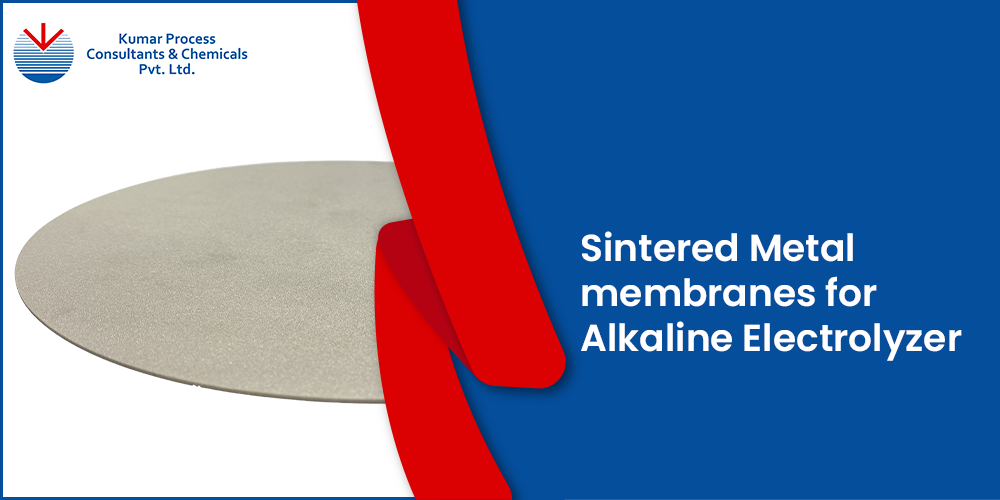


Alkaline water electrolysis is a widely adopted technology for green hydrogen production due to its cost-effectiveness and scalability. However, the efficiency and durability of this process largely depend on the quality of materials used in the electrolyser, particularly the porous transport layers (PTLs). PTLs are required for efficient liquid distribution and gas extraction. In this blog, we will explore the role of sintered porous metal membranes offered by Kumar Process Consultants in advancing the performance of alkaline electrolysers, focusing on their significance, types, and benefits.
Alkaline water electrolysis involves two half-reactions: the hydrogen evolution reaction (HER) at the cathode and the oxygen evolution reaction (OER) at the anode. For optimal performance, efficient gas-liquid separation and proper diffusion of gas are necessary. This is where porous transport layers (PTLs) come into play. PTLs ensure the smooth transport of reactants and products, reducing overpotentials and improving the overall efficiency of the electrolyser.
The choice of material for PTLs is crucial, and sintered porous metals have emerged as a reliable solution due to their robust mechanical properties, high permeability, and resistance to corrosion.
Sintered metal membranes are manufactured by compressing and sintering metal powders into a cohesive structure. This process creates a porous network, providing unique characteristics that make them ideal for use in alkaline electrolysers. Here are some key advantages:
The demand for green hydrogen is set to rise, and with it, the need for efficient and reliable electrolysers. Innovations in sintered metal membrane technology, such as the development of novel alloys and surface treatments, hold promise for further enhancing the performance of alkaline electrolysers.
Research is ongoing to optimize the design and material properties of sintered porous metal membranes, aiming to reduce manufacturing costs and improve the sustainability of hydrogen production processes. Kumar Process Consultants is at the forefront of this innovation, continuously improving their products to support the growth of the hydrogen economy.
Sintered metal membranes play a vital role in the performance and efficiency of alkaline electrolysers, making them an essential component in the quest for sustainable hydrogen production. With their high permeability, mechanical strength, and corrosion resistance, these filters offer significant advantages for large-scale applications. As a leading provider of sintered metal membrane elements, Kumar Process Consultants is committed to supporting the hydrogen industry with high-quality, customized solutions.
For more information on sintered metal membranes and how they can enhance your electrolyser systems, contact Kumar Process Consultants today and discover the future of efficient hydrogen production.
PEM electrolysis uses a proton exchange membrane for high efficiency and fast response, but is costly. Alkaline electrolysis is more affordable, using a liquid solution, but slower. The highly caustic solution required for electrolysis is also a matter of safety during operation.
Alkaline electrolysis splits water into hydrogen and oxygen using an electric current in an alkaline solution, with hydrogen at the cathode and oxygen at the anode.
Sintered metal membranes provide high permeability, strength, and corrosion resistance, improving gas-liquid management, reducing losses, and enhancing electrolyser efficiency and lifespan.
They offer uniform pore distribution and robust structure, promoting efficient gas diffusion and reactant flow, reducing overpotentials, and boosting efficiency at high current densities.
Yes, as well designed membranes can increase efficiency, lower energy use, and extend service life, reducing maintenance and replacement costs.